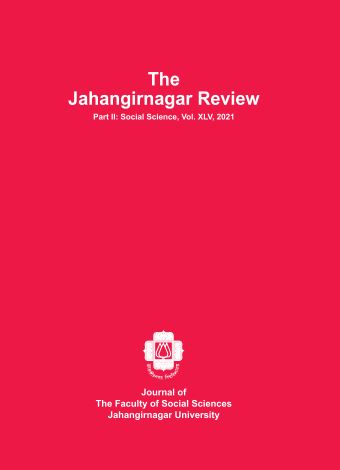Assessment of Psychological Well-Being in Hazard Prone Area
Main Article Content
Abstract
Bangladesh is in South Asia’s low-lying region. For this unique geographic location, this country is endowed with immense natural beauty. The flip side of the coin, on the other hand, is extremely enraged. Bangladesh faces devastating damages every year for this kind of geographic and geologic setting. Bangladesh has been ranked 7th among the countries which are severely affected by hazardous events since 1998. Besides economic and social damages, hazards are known to impact individuals’ mental well-being severely. Also, a poor psychological state works as an influential factor to increase hazard consequences. For this research, both secondary and primary data sources have been considered. Satellite imageries, published documents, and maps are secondary data collected from Google Earth and other online platforms. Also, MHI-5, a self-assessed questionnaire, has been used to estimate and calculate the psychological well-being as well as the psychological vulnerability of individuals. Several statistical methods were used to analyze data, such as ROC curve analysis and several GIS techniques throughout the research. Results show that biophysical vulnerability in the study area creates psychological vulnerability. Government and policymakers should consider this dimension in disaster management to identify the most vulnerable individuals because only structural recovery will not be enough to reduce vulnerability in a holistic approach.

